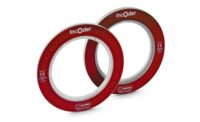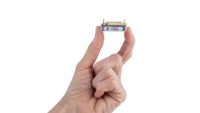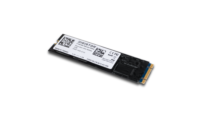BEDFORD, Mass. — Celera Motion, a business unit of Novanta Inc., announced new sizes and capabilities for its AuraTM Absolute Chip Encoder Series of rotary and linear optical encoders with MicroE technology.
The new Aura encoder line extension products will meet all the typical sizes needed in a robot arm, from small end effectors at the end of the arm to the upper shoulder joints.
“This new product will be an incredibly precise and highly accurate encoder in a small package to meet customers’ high-performance needs,” said Mike Mainvielle, vice president of product management and marketing, Celera Motion. “We are excited that Aura-C will offer an easily integrated, low-power, absolute encoder option that will help in the advancement of demanding customer applications.”
Aura is designed as a solution for high-volume OEM applications including:
- Surgical robots;
- Cobots, robot joints, and grippers;
- Exoskeleton and wearables; and
- Semiconductor.
The Aura line extension enables an even wider range of customizable scale sizes along with standard glass offerings ranging from 18-63.5 mm rotary OD and new-to-market linear scales lengths ranging from 9-195 mm.
“Our focus has been to advance the performance of our optical encoder products over the past couple of years,” Mainvielle said. “The Aura for large rotary and linear scales is a fitting line extension to that growing product line.”
Aura solves the largest source of angular error, eccentricity, which is caused by off-center scale mounting and bearing runout. Two encoders are often employed to compensate for the error increasing cost and power consumption. Aura solves the eccentricity problem with its built-in compensation algorithm thereby eliminating the need for the second encoder.
Among Aura’s other benefits:
- Absolute position feedback for high-performance, high-volume designs;
- High resolution and accuracy for precision control needs;
- Wide alignment tolerances provide ease of integration resulting in higher productivity;
- Built-in eccentricity compensation for minimal angle error and easier installation;
- Low-power dissipation for tight temperature budget applications;
- Comprehensive connectivity meets industry standard interface requirements: BiSS-C, SSI, and SPI;
- AqB plus index provides additional incremental data to be used as secondary position information; and
- Global application support available to meet customer’s integration challenges.
For more information, visit www.celeramotion.com/microe/products/optical-rotary-encoders/nano/aura-series.




